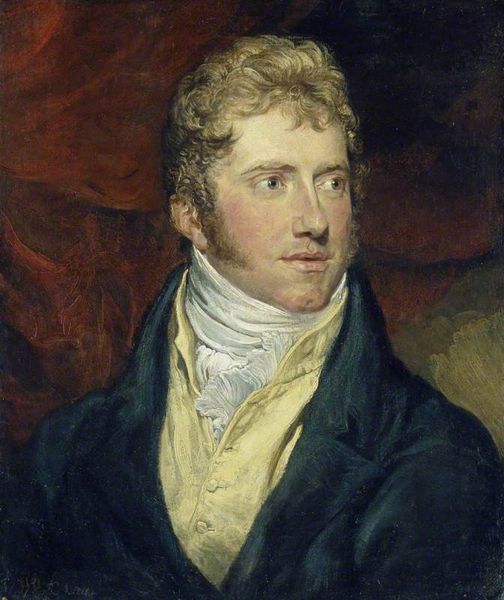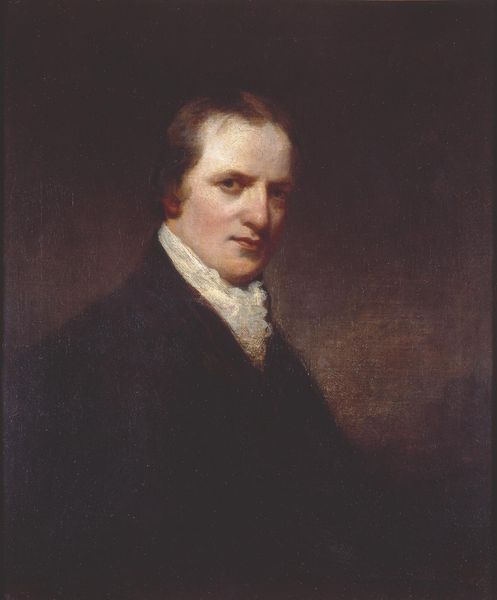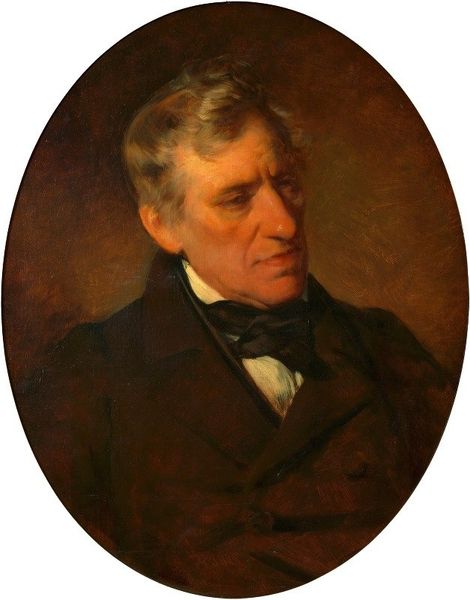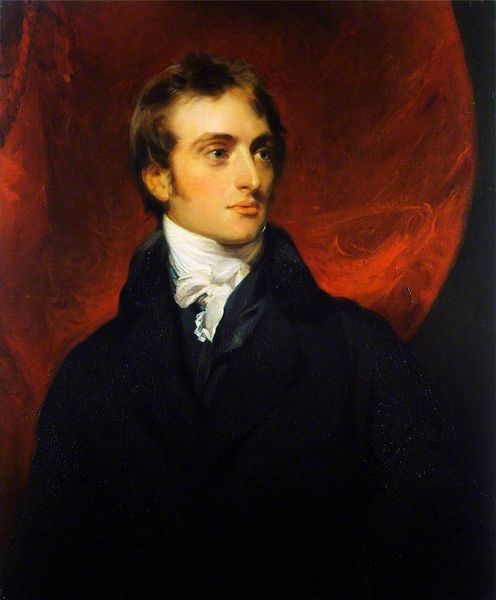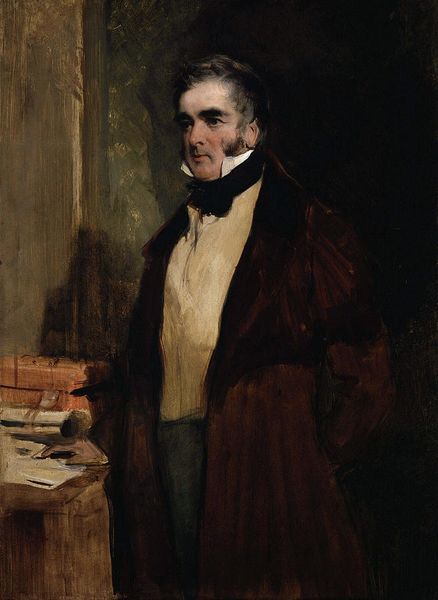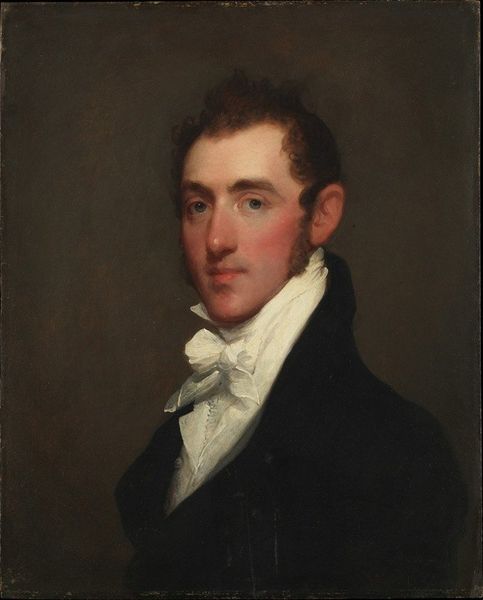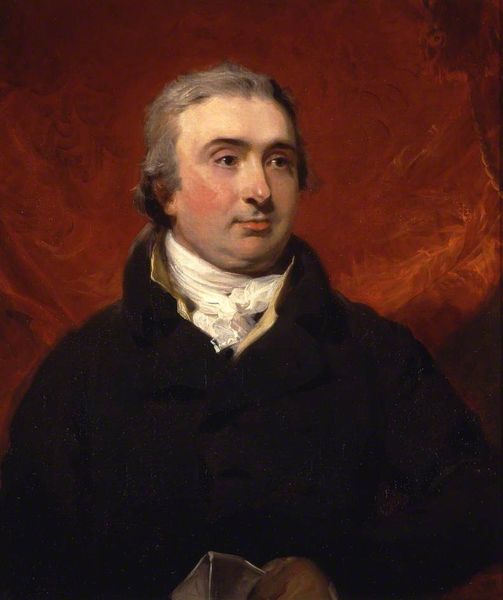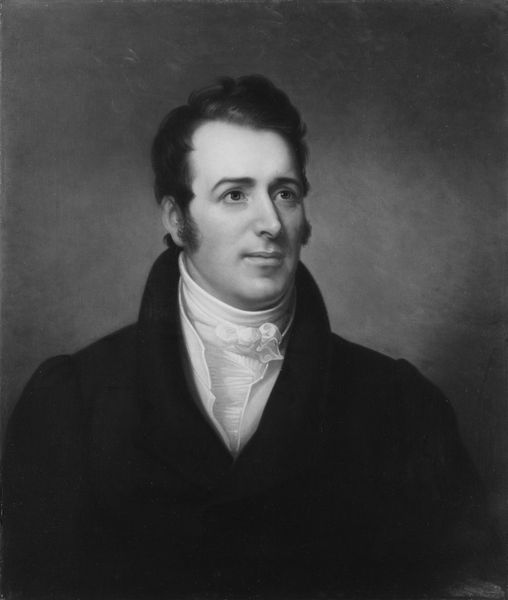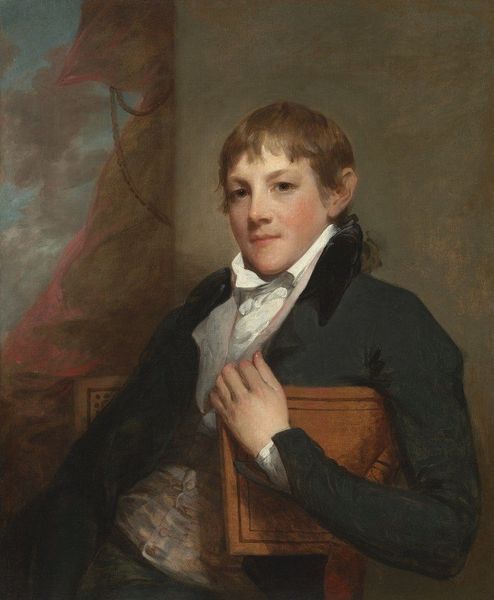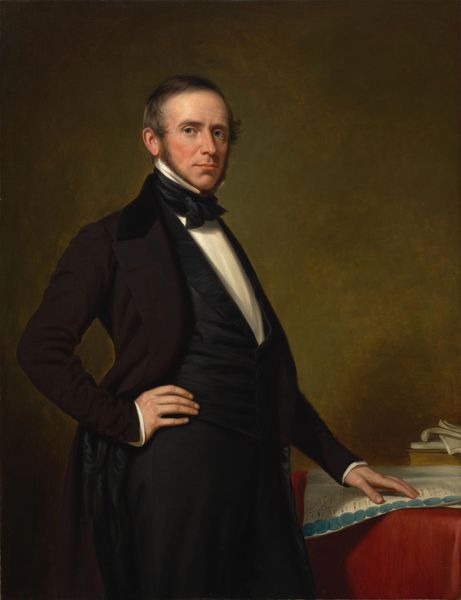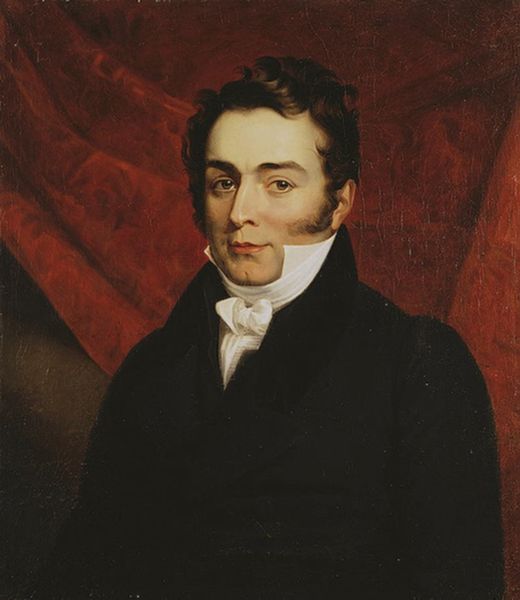
painting, oil-paint
#
portrait
#
portrait
#
painting
#
oil-paint
#
romanticism
#
realism
Copyright: Public domain
Editor: This is George Harvey's portrait of *David Ramsay Hay, Esq.* from 1830, rendered in oil paint. What immediately strikes me is the way the light catches on the folds of his vest, almost like highlighting the raw material before cutting and sewing. What stands out to you? Curator: The materiality of oil paint itself is quite prominent here, isn't it? Consider how Harvey builds up the layers to create the textures of the cloth and the sitter's skin. These are commodities transformed by labor, but still revealing their origins. Think about the sheep farms that produced the wool, the processes of dyeing, weaving, the tailoring to assemble garments which signal Ramsay Hay's status. What do you think about the connection between art and craft in that period? Editor: It’s interesting to consider portraiture in that way. It feels almost like early advertising – conveying status through meticulous depiction of commodities. I suppose it makes me wonder how Ramsay Hay's profession influenced the materials showcased in this piece, and how Harvey wanted it perceived. Curator: Exactly! David Ramsay Hay was an influential interior decorator and color theorist. The very tools and theories of his trade -- pigments, textiles, surface treatments -- become the subtext of the portrait itself. This challenges any easy distinction between "high art" and the practical skills of the artisan, doesn’t it? It invites a critical examination of what constitutes art and who decides. Editor: I see what you mean. By focusing on the tangible aspects, we can explore not just Ramsay Hay as an individual, but also the social and economic forces shaping his world. It's like the painting is a document of material culture. Curator: Precisely. Examining the materials reveals so much more than just aesthetics. It brings forward labor, consumption, and even class structure, turning what seems like a simple portrait into an engaging artifact. Editor: It changes how I look at portraits in general, really.
Comments
No comments
Be the first to comment and join the conversation on the ultimate creative platform.
